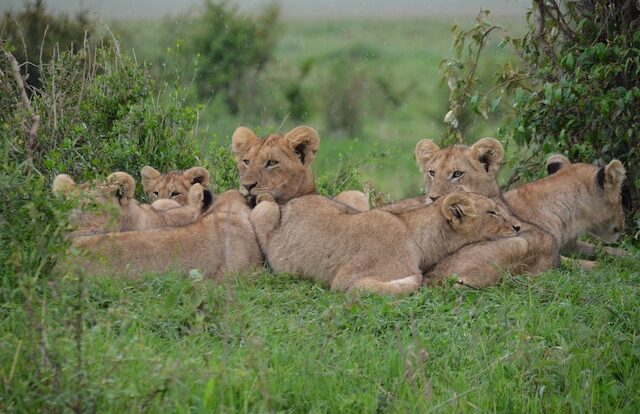Jaguars, with their distinctive yellow-orange fur adorned with unique spots, hold a special place in the realm of big cats. They are not only the largest feline species in the Americas but also rank as the third-largest globally. Revered and feared by humans for centuries, jaguars have played significant roles in art, literature, and mythology across various cultures.
Let’s delve into 15 captivating facts about these incredible creatures, from their formidable bite to their love for water, and explore what makes jaguars truly remarkable
1. Jaguars have the strongest bite of the cat kingdom relative to size:
Biologist Adam Hardstone-Rose says that pound for pound, the jaguar delivers a stronger blow than a lion or tiger. In 2012, Hardstone-Rose co-authored a study that compared the standard bite forces of nine cat species. Data have shown that, in terms of strength, jaguars cannot compete with tigers, which exert 25 percent more force when hunting. But proportionally speaking, small cats deliver the most powerful bites of any big cat. “The strength of [its] jaw muscles, relative to weight, is a little stronger than other cats. Additionally—also relative to its weight—its jaws are slightly smaller, which increases its biting capacity,” explains Hardstone-Rose. The bite force of a jaguar is only three-quarters as strong as that of a tiger, with the bite force of jaguars being stronger because they are significantly smaller. The jaws of a jaguar can cut straight through the skull of its prey, and can even pierce the thick skin of a caiman with ease.
Also Read > 5 Ways to Straighten Your Hair Naturally at Home
2. They love the water:
In contrast to the majority of feline species, jaguars exhibit a unique affinity for water. They are remarkably adept swimmers, and their natural habitat typically includes the presence of water bodies. While jaguars indeed rely on dense forest cover and a substantial prey population for their survival, they can occasionally be encountered in diverse environments like swamp areas, grasslands, and even arid scrub woodlands.
3. Male territories are twice the size of female territories:
In Mexico, male jaguars establish an annual home range covering approximately 100 square kilometers, whereas their female counterparts occupy a smaller territory of around 46 square kilometers. During the dry season, males exhibit greater mobility, covering about 2,600 meters within a 24-hour period, compared to females who typically travel 2,000 meters. Male jaguars invest more effort in marking their territory and defending it against other males. They employ various methods such as vocalization, tree scraping, and scent marking to assert their dominance and protect their home ranges.
4. Jaguars are loners:
Jaguars typically lead solitary lives, staking out their territory by marking it, thus sending a clear message to other jaguars about ownership. In the case of female jaguars, they raise their cubs independently, and the young jaguars start their hunting ventures at approximately two years of age
5. They’re often mistaken for leopards:
Jaguars are often confused with leopards, but their spots are more complex and often have a dot in the center.
6. Jaguars hunt during both day and night:
Jaguars are opportunistic hunters and will hunt during both day and night. They are known to prey on a variety of animals, including deer, peccaries, monkeys, birds, fish, and even domestic livestock.
7. They’ve inspired myths and legends:
Jaguars have been revered and feared by humans for centuries. In many cultures, jaguars are associated with power, strength, and courage. They have been depicted in art, literature, and mythology throughout history.
8. Extraordinary Roaring Abilities:
Jaguars employ their roars as a means of communication that spans impressive distances. Typically, they use these roars to signal potential mates or deter other males from encroaching on their territory. What sets their roars apart is the distinctive bark-like quality they carry. In addition to their characteristic roars, jaguars are also capable of producing various other noises, including grunts and cough-like sounds. They are often regarded as noisy animals with a unique vocal presence. The resonance and depth of their roars are noteworthy, and they can carry over distances of up to two miles, making them an effective way for jaguars to convey their messages in the wild.
9. Jaguars are near threatened:
Due to threats like deforestation and habitat degradation, jaguars have lost 46% of their historic range. Presently, the majority of jaguar populations are concentrated in the Amazon basin, but unfortunately, their numbers continue to dwindle.
10. Jaguars are important to their ecosystems:
Jaguars symbolize the untamed spirit of the wilderness, encapsulating the very essence of the world’s most awe-inspiring jungles and forests. Their presence within the ecosystem serves as a powerful testament to the critical significance of conserving biodiversity and upholding the delicate balance of nature.







I appreciate, cause I found exactly what I was looking for. You’ve ended my four day long hunt! God Bless you man. Have a nice day. Bye